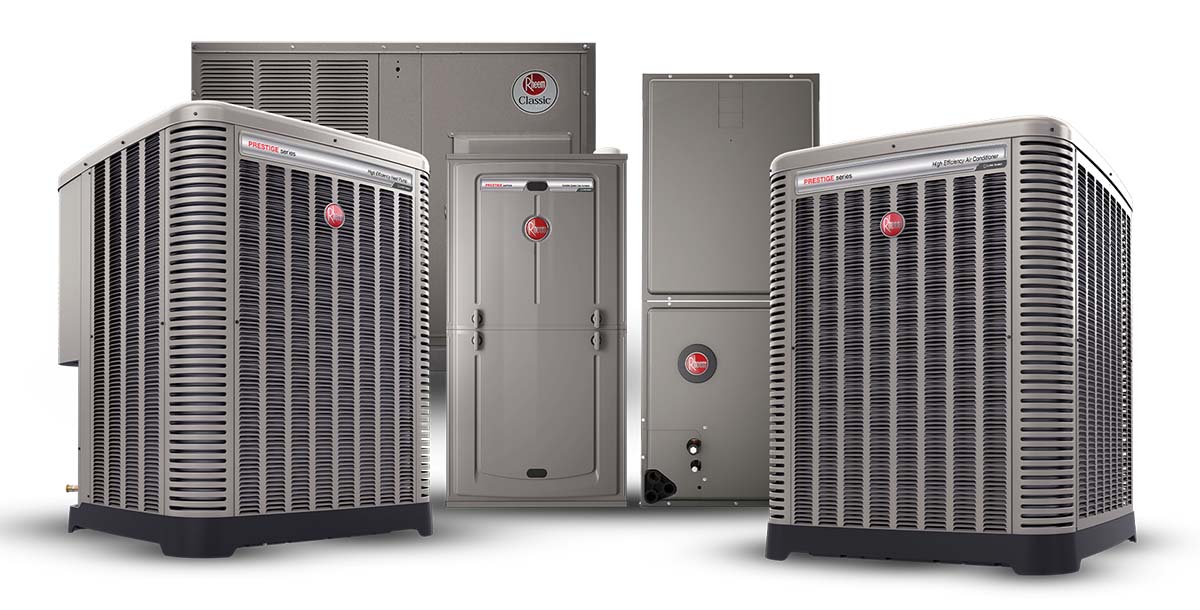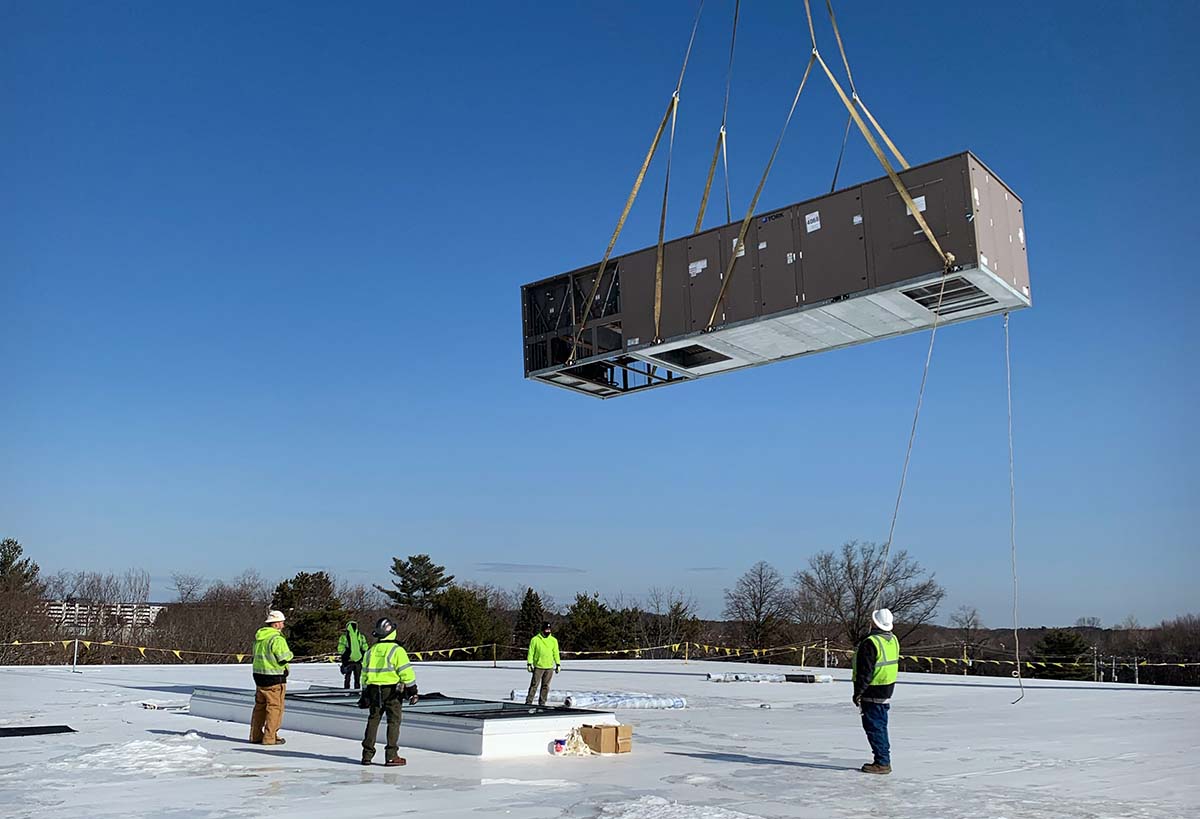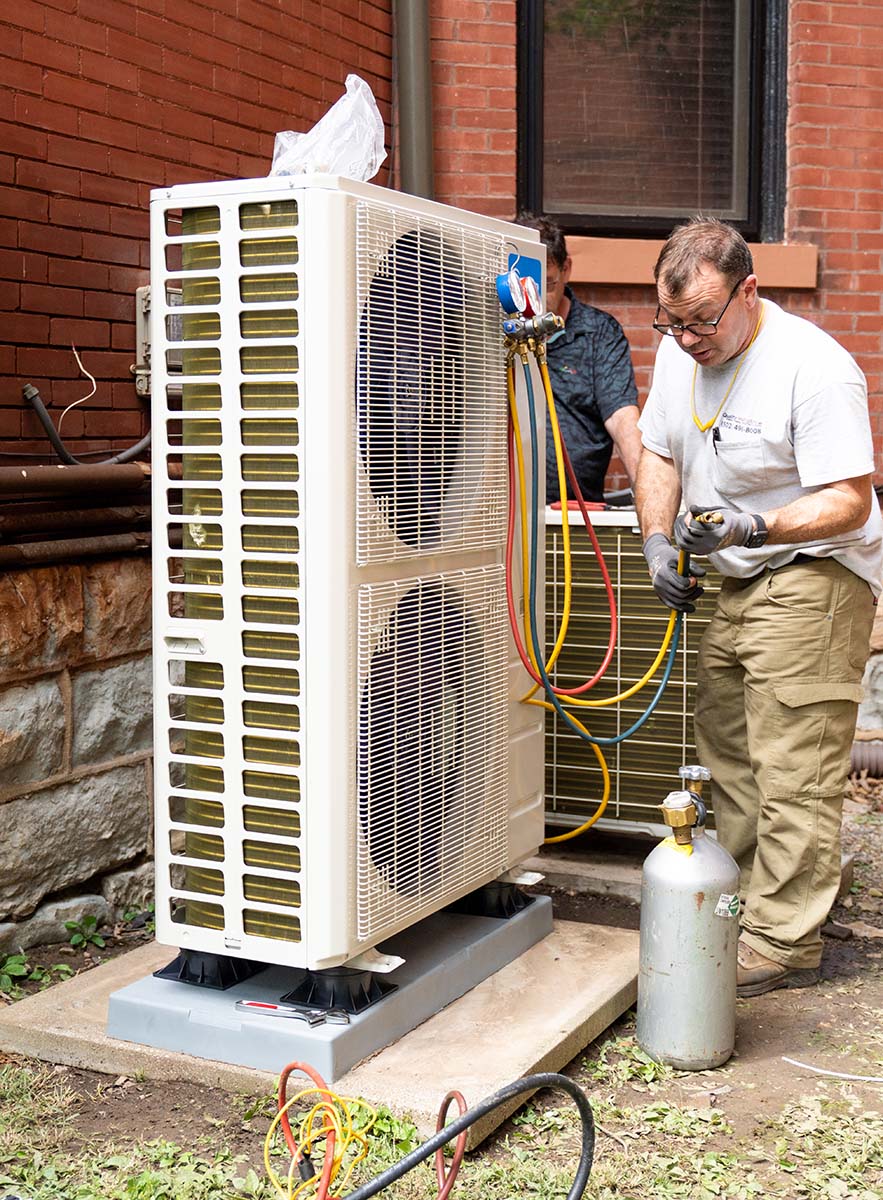The HVAC industry is gearing up for some challenges in 2024 that could put a damper on the incredible growth it’s experienced over the last few years. Inflation and higher interest rates continue to be an issue, and rising equipment and installation costs could lead consumers to start repairing rather than replacing their existing systems. In addition, the 40% cut in HFC production, which went into effect in January 2024, could lead to shortages and significant price increases of popular refrigerants such as R-410A.
On the bright side, there are promising opportunities for the HVAC industry, courtesy of regulations such as the AIM Act and the Inflation Reduction Act (IRA). Both promote the adoption of eco-friendly equipment, with the IRA providing significant financial incentives for end users. This will likely create avenues for contractors to expand their businesses by meeting the increasing demand for energy-efficient equipment. Manufacturers are banking on these opportunities to offset the challenges of 2024, which is why they remain optimistic about the year ahead.
Vice president of residential business
Rheem
Normalized Growth
Over the last few years, the HVAC industry has experienced substantial growth, surpassing 10 million compressor bearing units by 2022, leading the market to double in size, said Randy Roberts, vice president of residential business at Rheem. Considering this remarkable expansion, he said that it's not unexpected that the industry leveled out in 2023 and that there may be some challenges ahead this year.

EFFICIENT UNITS: Rheem offers a range of energy-efficient heat pumps in its Endeavor™ product line. (Courtesy of Rheem)
“Overall, we see 2024 as a year with hurdles for our industry that could limit growth,” said Roberts. “While factors like inflation and rising costs of interest rates may create challenges, it's essential to approach this landscape with a proactive mindset. To work around these issues, we could see consumers looking to repair, when possible, based on the rising costs for systems and installations.”
That said, Rheem expects to see some opportunities for growth in 2024, thanks to the decarbonization trend and tax credits.
“Each year, the HVAC industry strengthens decarbonization efforts,” said Roberts. “And with advancements in technology and more awareness of sustainable products and practices, it’s becoming easier for homeowners and businesses to be carbon-conscious and environmentally proactive.”
The IRA could help, too, noted Doug Widenmann, senior vice president of marketing at Daikin Comfort Technologies North America Inc., especially since the legislation will likely be fully implemented in 2024. This will drive demand, making the move to heat pumps more affordable for consumers.
“However, existing home sales, a major source of replacement opportunities, are dramatically down, as most homeowners are not motivated to sell their existing home, given the unfavorable gap between an existing and new mortgage rate. This has taken potential units out of the market,” said Widenmann. “If mortgage rates begin to trend downward in 2024, we believe industry growth will start to normalize. Many banks are starting to forecast when the Fed will start to reverse course on rates. If this happens, it could be better for the HVAC industry.”
On the commercial and industrial side, sales have been brisk for Daikin, due to pent-up demand and strong activity in certain vertical segments, like schools and data centers, said Widenmann. However, there are some clouds on the horizon.
“In 2024, the American Institute of Architects (AIA) is forecasting low single-digit growth in the commercial segment, and the Architecture Billings Index (ABI) showed some softening in the latter part of 2023,” said Widenmann. “We do not see the 2024 commercial segment as robust as 2023. There are also some looming concerns regarding the commercial office segment and the risk exposure that could impact the availability of credit, which could have an impact on commercial project development.”
Danfoss also believes growth rates will normalize this year, compared to the strong growth experienced over the last few years, said Vikas Anand, vice president of Danfoss Climate Solutions, Sales, North America. The company is anticipating growth to be in the mid-to high-single digits in 2024, with the largest growth coming from sectors including non-residential buildings, IAQ, data centers, and food processing.
“Overall, the economy is staying very resilient, despite inflation and higher interest rates,” said Anand. “In some projects, higher interest rates are dampening the return on investment, which will impact HVAC purchase decisions. We do expect that the demand for both retrofits and repairs will continue to remain strong, reflecting both cost concerns balanced with the push to lower carbon emissions to comply with local, state, and federal regulations.”
While inflation, rising costs, and interest rates will likely pose challenges in 2024, Lennox believes that the HVAC industry's essential nature will continue to drive demand, said Gary Bedard, executive vice president and president of Lennox Residential Heating and Cooling. He added that the IRA, tax credits, and other local incentives aimed at promoting energy-efficient upgrades will also encourage consumers to replace rather than repair.
“For 2024, we continue to see strength and resilience in the commercial unitary market. We think these markets will be up mid-single digits in volume based upon some pent-up demand and strong growth prospects,” he said. “For residential, we are encouraged by the soft landing and the continued strength of consumers. This is a great industry with many long-term growth drivers, from the growing housing deficit to longer unit run times, to an increasing focus on heat pump installations. All of these factors should drive a low single-digit volume growth, which should allow contractors to experience mid-single digit revenue growth.”
Heat Pumps are Hot
Indeed, the widespread adoption of heat pumps across various sectors, as well as a surge in demand for high-efficiency systems, has helped the HVAC industry experience significant growth over the past year, said David Budzinski, president of global residential and light commercial at Johnson Controls.

SIGNIFICANT INNOVATIONS: The focus on healthy air, climate, and sustainability has driven significant innovations across all sectors within the HVAC industry. (Courtesy of Cambridgeport Air Systems)
“Combined with a continued prioritization of next-generation smart technology, customers are investing in systems and digital solutions that can enhance IAQ, optimize energy use, and align home and building operations with environmentally responsible practices,” said Budzinski. “The focus on healthy air, climate, and sustainability has driven significant innovations across all sectors within the industry, and we expect to see this evolve even further in the coming year.”

RISING DEMAND: Younger, environmentally aware homeowners are looking for advanced heat pump solutions. (Courtesy of Midea)
Midea has also seen a rising demand for advanced heat pump technology, especially among younger, environmentally conscious homeowners seeking energy-efficient solutions in their residences, said David Rames, senior product manager at Midea America Corp. This trend creates an opportunity for HVAC manufacturers to meet this demand with innovative and eco-friendly solutions.
“Even with economic challenges occurring every day, people are still very interested in innovative HVAC technologies and how to be more environmentally friendly, comfortable, and potentially lower their utility costs,” said Rames. “With that being said, the implementation of state and federal rebates should allow the residential sector of our business to continue to develop.”
On the other hand, economic difficulties could lead to a shift towards more repairs instead of replacements, as customers aim to prolong the life of their current HVAC systems, said Rames. However, this investment might not pay off in the long run, he noted, especially given the phasedown of certain refrigerants and the resulting increased cost of replacement.
Transition and Training
The phasedown will, indeed, be an important issue this year, as January 2024 marks the most substantial reduction in the HFC phase-down mandate thus far. The initial phase of the policy, which required a 10% cut in HFC refrigerant production in 2022, had a negligible impact on refrigerant availability, said Budzinski, but the additional 30% cut in production in 2024 is poised to create a significant impact on the availability — and cost — of many HVAC refrigerants, including R-410A.
“Because of this, it is important for dealers and contractors to have a plan in place for R-410A recovery and reclamation,” he said. “Strong recovery and reclamation practices will help to maintain the supply of existing R-410A required to service current product inventories. Additionally, all involved parties must understand the safe handling, storage, and transportation of A2L refrigerants to ensure a successful changeover.”
Indeed, refrigerant management and reclaiming of refrigerant should be top of mind right now, said Widenmann, given the latest EPA ruling on the HFC phasedown, as well as the low recovery rates of HFCs.
“Refrigerant reclamation clearly needs to accelerate over the next 10 years if we are to meet the decarbonization objectives laid out by the Kigali Amendment and the AIM Act and have the refrigerant required to service and maintain systems,” he said. “Therefore, if you are a contractor and not recovering refrigerant or a distributor who is not part of a reclaim program, then you should start now.”
Bedard agrees, noting that the steep reduction in HFC production this year makes it critically important for the HVACR industry to recycle more refrigerant.
“There’s lots of R-410A out there to help service equipment. Using recycled refrigerant brought back to industry specifications will be vital for us to continue to reliably service existing equipment for many years,” said Bedard. “This transition will be a challenge for both manufacturers and contractors, since it requires product redesign, adapting to new technologies and processes, as well as new training and continuing education courses.”
Training is essential in the transition to A2L refrigerants, as technicians will need to understand how to safely handle these mildly flammable alternatives. In addition, contractors will need to be well-trained in order to install advanced HVAC systems, Rames noted, adding that there is also an immediate need to recruit and train the next generation of HVAC technicians to meet demand as the workforce ages.
“Contractors are expressing the need for better training to install next-generation heat pumps,” said Rames. “According to a survey conducted by Midea America, Coyne Public Relations, and Atomik Research group, 81% of contractors express the need for better training to install next-generation heat pumps. This identifies the challenge of ensuring a skilled workforce capable of handling advanced HVAC technology. Training the next generation in the latest technology is also key in sustaining the HVAC industry, especially as more heat pump offerings come to market and gain popularity.”
Looking Ahead
Even with all the headwinds expected this year, manufacturers are quite optimistic about 2024. Danfoss, for example, sees opportunities in the green transition, smart solutions, and IAQ. On the green transition, Anand said that it is gaining momentum as companies prioritize environmental, social, and governance (ESG) goals, leading to a surge in demand for sustainable solutions like energy-efficient heat pumps and circular products to reduce environmental impact.
“Regarding smart solutions, with our world becoming more and more connected, commercial building, food retail, food services, the cold chain, and residential buildings will require digital solutions to monitor and control the maintenance and performance of HVACR equipment,” he said. “Concern about IAQ also remains high, as we continue to recover from the pandemic, so demand for HVAC solutions that support enhanced IAQ, such as dedicated outdoor air systems (DOAS) will continue to accelerate.”
For Johnson Controls, it’s an exciting time to be a part of the HVACR industry for a couple of reasons. First, the focus on electrification and decarbonization, coupled with substantial investments in technological advancements, is bringing the world closer to the realization of smart, healthy, and sustainable buildings, said Budzinski. Second, there is tremendous growth in heat pump innovation and adoption, with new developments enabling a broader range of applications and allowing efficient operation in lower temperature conditions.
“With IRA credits available through December 31, 2032, there is a long-term opportunity for clean energy investment,” he said. “Combined with the many local and manufacturers’ rebates available, it provides a strong incentive for homeowners to consider high-end comfort systems and high-efficiency heat pumps.”
Midea is also bullish on heat pumps this year, with Rames noting that heat pump compressor technology and its ability to produce heat may be the single most impressive innovation of our time.
“‘Grandpa’s’ heat pumps are a thing of the past, and now gas furnaces are being replaced with all-electric ‘clean’ heat options. This has made a positive impact across all geographical areas, especially northern climates,” he said. “And while people know about heat pumps, they have no idea how far we’ve come in terms of cold climate performance. As this new technology becomes more widely adopted, we’re excited to see heat pumps become available for everyone equitably, no matter the climate they may live in.”
The shift to A2L refrigerants, driven by the requirements of the AIM Act, might also be a benefit this year, as manufacturers start introducing new equipment that utilizes low-GWP alternatives such as R-32 and R-454B. For example, Rheem plans to launch its A2L products in the second or third quarter of 2024 in order to allow plenty of time for distributors and contractors to manage the transition, said Roberts.
“The entire industry is actively working with the EPA and DOE around the transition to new low-GWP refrigerants,” he said. “It's been inspiring to see the entire channel including distributors, contractors, and manufacturers work together to make sure our voices are heard when it comes to policies around this transition. We are excited to move to the new refrigerants, and we also want to have a smooth transition without stranding existing inventory, which we are working tirelessly to achieve.”
Daikin is also looking forward to introducing its A2L equipment this year. The company plans to begin rolling out its A2L products in the spring of 2024, said Widenmann.
“We are very excited about the introduction of R-32, which we believe to be the most responsible choice,” he said. “It has excellent heat transfer properties that can be leveraged to design light-weight units that are easier to service and install and that require less refrigerant volume than conventional systems. And as a single-component, non-proprietary refrigerant, R-32 typically costs less per pound as compared to blended alternatives with proprietary components. It’s also a proven commodity with over 230 million installations globally.”
Even though Lennox expects some macroeconomic uncertainty and lower consumer confidence this year, the company also anticipates a bright long-term outlook for the industry.
“Units continue to be run longer, and policy responses to climate change will continue to bring new opportunities to those of us in the HVAC business,” said Bedard. “We also think there’s plenty of opportunity with an improving supply chain and various tax benefits and incentives driving HVAC unit replacement over repair. In addition, we are finding that an increasing number of homeowners are paying attention to the air in their homes and prioritizing IAQ, creating an opportunity for us as HVAC experts to convey the value of healthy, ‘perfect’ air and propose beneficial solutions for the home.”



Report Abusive Comment